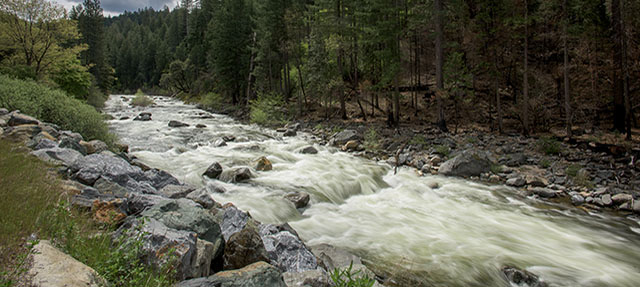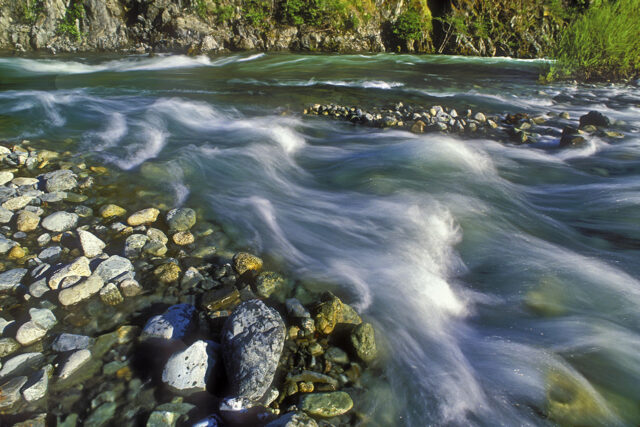This commentary was published in CalMatters on September 4, 2020
Dams, diversions, and land conversion have substantially altered California’s rivers and disrupted the processes that sustain ecosystem health. The result is a crisis for native fish and wildlife and the loss of many benefits we derive from river ecosystems. Of the state’s more than 125 native fishes, seven species are already extinct and 100 are in decline, including half of California’s salmon and steelhead species. In the face of the changing climate, biodiversity loss, and continuing conflict over water, California urgently needs to rethink how it manages water for the environment.
In some of the state’s rivers, the law requires the protection of “environmental flows”—water left in rivers to protect salmon and other sensitive species. Commonly, these requirements prescribe minimum flows, usually water released from dams or limits on water diversions for other uses. Unfortunately, this minimum flow approach fails to preserve the natural variation needed to maintain ecosystem functions, such as the movement of sediment, maintenance of water quality, and environmental cues for species migration and reproduction.
In our new report, we recommend moving away from minimum flow standards to the use of “functional flows”—the seasonal components of river flow that sustain the biological, chemical, and physical processes upon which native freshwater species depend. This approach doesn’t mandate restoring natural flows or historical ecosystem conditions. Instead, if focuses on preserving key functions that maintain ecosystem health and are broadly supportive of native fish and wildlife.
A functional flows approach also requires physical habitat improvements—such as barrier removal, channel restoration, and floodplain reconnection projects—to restore critical interactions between flowing water and land. Too often, physical habitat restoration is not coordinated with changes in environmental water management. Aligning functional flows with physical habitat restoration—rather than a flows-only or habitat-only approach—brings a greater environmental return on investment. It also creates opportunities for multi-benefit projects that meet the needs of people and the environment.
Functional flows can be implemented in a variety of ways, including by modifying dam operations, altering the timing and location of diversions, and managing discharges of wastewater and stormwater to rivers and streams. But creative changes in governance are also needed to put functional flows into practice. We recommend the allocation of an ecosystem water budget—a fixed volume of water for the environment, overseen by an independent trustee—to be flexibly managed for functional flows. This flexibility would support cooperative solutions among water users and, critically, would allow for adapting to new information and changing conditions.
In some cases, functional flows will require more water for the environment, with corresponding declines in water supply for other purposes. Yet, by maximizing the benefits of environmental water, this approach provides greater assurances that water is being used effectively. A fixed water budget also brings greater certainty over supply reliability for other water users.
Improvements in ecosystem health would also deliver significant public benefits, including better water quality and recreational opportunities. It would also reduce the likelihood of disruptions from new Endangered Species Act listings. Actions taken now to improve ecosystem health for all native species—not just those currently protected—can pay off in the future by avoiding additional regulatory burdens.
Sustainable management of water resources is one of California’s—and indeed the world’s—grand challenges. California will continue to face intense competition over water resources, forcing difficult decisions over how to allocate water to protect freshwater ecosystems for all uses, not just water supply. A functional flows approach enables a more efficient and effective use of environmental water, and can be an important tool in managing the state’s rivers for an uncertain, but certainly changing, future.





